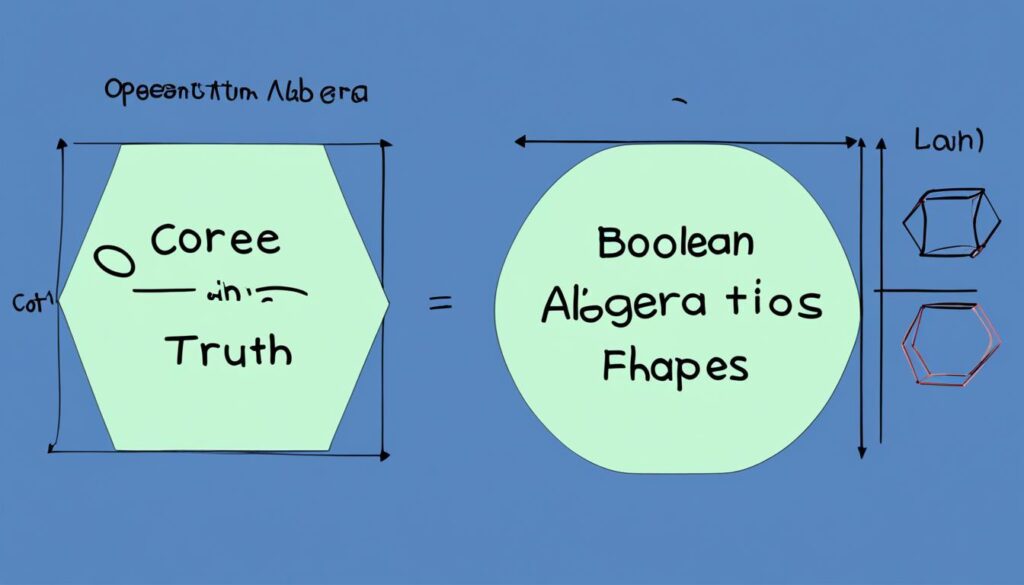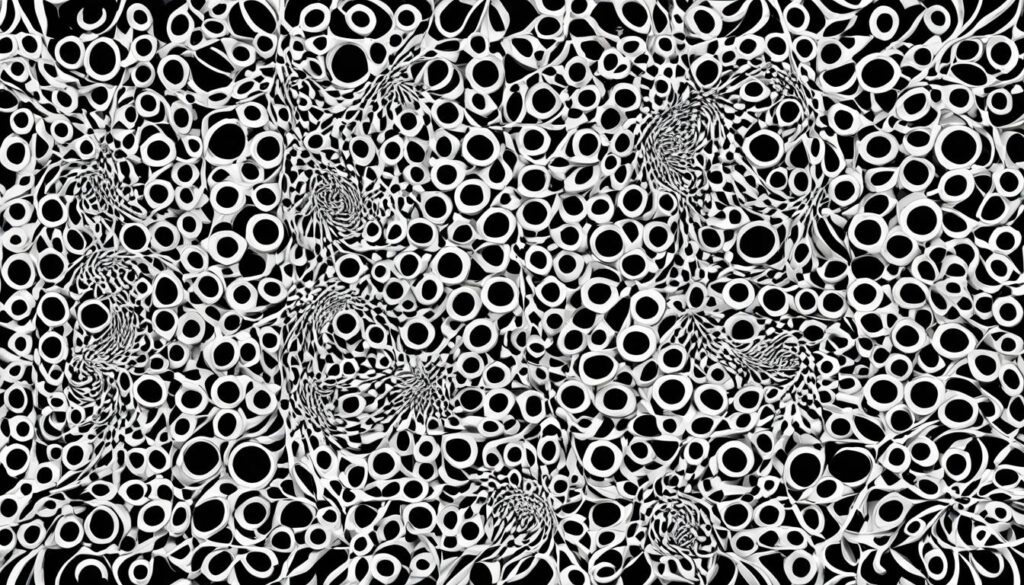As we delve into the intricacies of boolean algebra, we stand on the shoulders of mathematical giants who laid the foundational groundwork for the digital world as we know it. Boolean algebra is a pillar of computational logic, providing the framework for the binary systems that power everything from microprocessors to expansive databases. At the heart of these systems lie the basic laws and theorems of boolean algebra—indispensable tools that enable us to model and manipulate binary variables with precision and clarity.
Our exploration begins with an understanding that boolean algebra transcends simple mathematical curiosity. Instead, it is the bedrock of modern electronics and computer science. As we unpack these concepts, bear in mind the practical applications that span from simple electronic gates to complex algorithms. The theorems we discuss are not just abstract principles; they are the very rules that allow for the optimization and efficiency of digital systems around the globe.
Table of Contents
Introduction to Boolean Algebra
Embarking on an exploration of boolean algebra begins with an understanding of its principles and distinct characteristics. This foundational system of arithmetic forms the nexus of logical reasoning in computer science, digital electronics, and several other disciplines. As we unfold the layers of boolean algebra, we shall delve into its essence, trace its historic roots, scrutinize its real-world applications, and discern its peculiarities when contrasted with traditional algebra.
Defining Boolean Algebra
At the heart of defining boolean algebra lies the concept of binary variables, which are limited to two values—often represented as 1 and 0. This simplification to binary oppositions lends boolean algebra its unique power in abstract reasoning and computational tasks. The operations within this algebra—chiefly conjunction (AND), disjunction (OR), and negation (NOT)—correlate directly with logical operations applied to binary variables, enabling clarity and precision in problem-solving.
Historical Context and Applications
The historical context of boolean algebra dates back to the 19th century when George Boole laid its theoretical foundations. Since then, its applications have permeated through various facets of modern technology. In digital electronics, boolean algebra underpins the functioning of circuits and processors, thereby serving as the cornerstone of essentially all digital devices. In computer science, it assists in algorithm formulation, database search logic, and even in the realms of artificial intelligence. The mathematical discipline also finds utility in network designs, prototyping of logical gates, and the simplistic representation of complex logical relationships.
Boolean Algebra vs. Traditional Algebra
When juxtaposing boolean algebra with traditional algebra, stark contrasts emerge. Unlike traditional algebra, which concerns itself with numerical values and a vast array of operations, boolean algebra is strictly limited in scope with binary variables. This characteristic of boolean algebra elucidates logical structure over arithmetical complexity, making it a specialized tool tailored for analytical reasoning in digital and logical contexts. In traditional algebra, variables can assume an infinite spectrum of values, whereas, in boolean algebra, the discourse is singularly about truth values and their logical connections.
Core Operations of Boolean Algebra
In our exploration of boolean algebra, we delve into its core operations, which are the building blocks for any boolean algebraic expression or digital circuit design. The primary operations – conjunction (AND), disjunction (OR), and negation (NOT) – each play a pivotal role in the execution of boolean logic. To exemplify these core operations and their fundamental importance to boolean algebra, we will unpack them with illustrative examples and corresponding truth tables.

The conjunction operation, generally symbolized as AND, is a binary operation which returns a true value only if both operands are true. The truth table for this operation demonstrates that, under boolean algebra’s rigorous conditions, the resulting truth value is false unless both inputs are expressly true.
Similarly, disjunction, commonly referred to as OR, is another binary operation in boolean algebra but operates with a more inclusive approach. This operation yields a true value if at least one of the operands is true. The versatility of the OR operation becomes evident in cases where multiple conditions may lead to a true outcome, broadening the scope of boolean algebra’s applicability.
Negation, designated as NOT, serves as a unary operation in boolean algebra. The NOT operation inverts the truth value of its single operand. This simple yet powerful action is crucial in the construction of more complex operations and for crafting conditional boolean expressions.
To reinforce our understanding of these core operations in boolean algebra, consider the following table:
| Operation | Symbol | Expression | Truth Table | |||||||||||||||
|---|---|---|---|---|---|---|---|---|---|---|---|---|---|---|---|---|---|---|
| Conjunction (AND) | ∧ | A ∧ B |
|
|||||||||||||||
| Disjunction (OR) | ∨ | A ∨ B |
|
|||||||||||||||
| Negation (NOT) | ¬ | ¬A |
|
The properties related to these core operations, such as commutativity, associativity, and distributivity, are essential for understanding the structuring and simplification of boolean expressions. These properties ensure that despite the apparent simplicity of these operations, they can be combined in various ways to support complex logical decision-making processes at the heart of digital systems. Deepening our grasp of boolean algebra and its core operations allows us to harness their full potential in the realm of computational logic and digital circuit design.
Boolean Expressions and Variables
Diving into the heart of digital logic, it is essential for us to master the intricacies of boolean expressions and understand how binary variables operate within these frameworks. These expressions are more than mere arrangements of symbols; they are the foundational elements that govern the logical operations in computational systems.
Understanding Boolean Expressions
At first glance, boolean expressions may seem like abstract strings of 1s, 0s, and operational characters. Yet, their role is pivotal in defining conditions that are either true or false. Through our exploration, we aim to demystify these expressions, shedding light on how they are constructed with variables and how they are evaluated within specific contexts. Grasping this aspect of boolean algebra is pivotal for anyone delving into computer engineering or digital circuit design.
Binary Variables in Digital Logic
Binary variables are the bread and butter of digital logic—these are the simple yet powerful ‘yes’ or ‘no’ statements that drive complex computational processes. The binary nature of these variables reflects the on-and-off state inherent to digital systems. When we discuss binary variables, we’re talking about the most basic units of data, resembling the DNA of digital logic circuits.
Here’s an overview of how binary variables communicate within a boolean expression:
| Variable | Representation | Application in Boolean Expression |
|---|---|---|
| A | 0 or 1 | Used to hold a logical state within an expression |
| B | 0 or 1 | Can be combined with ‘A’ to form a more complex expression |
| Output C | Results from A AND B | Determines the outcome based on the input variables A and B |
Binary variables are at the helm of every digital device we use—smartphones, computers, and even smart appliances. They carry out the commands that result from the boolean expressions we code.
Recognizing the significance of binary variables and boolean expressions is not merely academic; it’s practical. In the realm of digital logic, these variables are the keystones in designing the circuits that manage the flow of information. A rigorous comprehension of how these elements interplay is thus crucial for any digital system designer.
Basic Laws in Boolean Algebra
At the heart of our discussion on boolean algebra are the basic laws that form the blueprint for constructing and simplifying logical operations. These laws are not just academic; they are the practical tools employed to optimize computations within digital circuits. Our focus now turns to the pivotal laws that serve as the cornerstones of boolean calculus: the commutative, associative, and distributive laws.
Commutative Law Explained
Key to the manipulation of boolean expressions is the commutative law, a foundational element of boolean algebra. It asserts that the order in which operands are used does not change the outcome of the operation, whether it’s an AND (·) or an OR (+) function. For instance, when we say A + B, we are sure to get the same result as B + A, and similarly, A · B equals B · A.

Associative and Distributive Laws
Further delving into the basic laws, we encounter the associative law, which involves grouping operands without altering the effect of the boolean operations. In simpler terms, (A + B) + C equals A + (B + C) when we apply the OR operation. The same principle holds true for the AND operation where (A · B) · C is always equal to A · (B · C).
The distributive law showcases the versatility of boolean algebra. It allows for the distribution of one operation over another—blending both the AND and OR operations. The distributive law comes into play, for example, in expanding the expression A · (B + C), which results in (A · B) + (A · C). This law is pivotal in simplifying complex boolean expressions and extracting the most efficient logic circuit designs.
- Commutes any boolean operation without affecting outcomes
- Stabilizes groupings under operations for operational consistency
- Efficiently distributes operations to simplify expressions
Understanding these basic laws is not just an academic exercise; it informs the practical processes that drive the development of efficient computational and digital systems. Our journey through boolean algebra continues beyond these laws, serving as an essential toolkit for progressing in the realms of computing and logical analysis.
Boolean Theorems and Logical Equivalences
Delving into the realm of boolean algebra, we recognize the profound significance of boolean theorems and logical equivalences as cornerstones of logical reasoning and digital design. These theorems are not mere mathematical abstractions but powerful tools that pave the way for transforming and simplifying complex boolean expressions. By mastering these concepts, we empower ourselves to analyze and streamline the architecture of boolean circuits with enhanced efficiency.
In our pursuit of clarity and efficiency in boolean computations, we frequently encounter scenarios that necessitate applying these theorems. Whether we are involved in designing minimalistic digital circuits or engaging in the theoretical evaluation of logical statements, the ability to maneuver through boolean expressions with logical equivalences is invaluable. These equivalences are the expressions of a singular boolean function that can manifest in divergent yet equivalent forms.
To elucidate the practical utility of boolean theorems, let’s take a closer look at the celebrated DeMorgan’s Theorems. They illustrate how a complicated logical operation can be broken down into simpler parts, making the logic gates more cost-effective and power-saving in digital circuitry.
- DeMorgan’s First Theorem: The negation of a conjunction is the disjunction of the negations.
- DeMorgan’s Second Theorem: The negation of a disjunction is the conjunction of the negations.
Now, imagine the power unleashed when these principles are applied to a digital system’s design. Let’s visualize this through a comparative table that demonstrates some common logical equivalences applied in boolean algebra:
| Original Expression | Equivalent Expression | Theorem Applied |
|---|---|---|
| !(A&B) | !A | !B | DeMorgan’s Theorem |
| !(A|B) | !A & !B | DeMorgan’s Theorem |
| A | (B & C) | (A | B) & (A | C) | Distributive Law |
| A & (B | C) | (A & B) | (A & C) | Distributive Law |
It’s crucial to note that these theorems hold the key to logical gate manipulation in physical hardware, significantly impacting the effectiveness and resource management of the device. It is through this intricate dance of logical equivalences and boolean theorems that we can refine and optimize our computational machines to achieve the apex of performance and reliability.
The intricacies of boolean algebra, and in particular the theorems and logical equivalences that govern it, continue to stand as both a testament to the ingenuity of human logic and a fundamental building block for our technologically driven society.
Practical Computational Methods in Boolean Algebra
In our exploration of complex mathematical concepts and their application in the real world, we now turn our attention to the practical computational methods used in boolean algebra. Our exploration will dive deep into the effectiveness of using truth tables for analytical purposes and various simplification techniques that enhance the utility of digital circuits.
Truth Tables and Boolean Algebra
At the core of boolean algebra, truth tables serve as an essential tool for deciphering the outcomes of boolean expressions. They are instrumental in evaluating every possible scenario of input values to derive an accurate output. This practice is pivotal not only in theoretical computations but also in designing and testing digital circuits. By demonstrating the output for each combination of input states, truth tables present a visual schematic for understanding boolean functions.
The practical merit of truth tables is easily observed in their ability to clarify the operational functionality of logic gates within a digital circuit. These tables are foundational for students and professionals alike, needing a clear method to grasp the principles of boolean algebra.
Simplification Techniques for Digital Circuits
The ultimate goal of working with boolean algebra in the realm of digital circuits is to simplify the circuit design, thereby minimizing complexity and cost while maximizing efficiency. Among the many simplification techniques, the Karnaugh map stands out as a vital method for reducing boolean expressions. By providing a spatial representation of truth values, this method allows us to visually identify and eliminate redundant elements within a boolean expression.
In addition to Karnaugh maps, algebraic manipulation is another tool used to simplify boolean expressions. Through the strategic application of boolean laws and theorems, intricate expressions can be condensed to their simplest forms, facilitating more streamlined digital circuits.
These practical computational methods not only save time and resources but also ensure the reliability and effectiveness of digital systems in technology today. As such, the knowledge of truth tables, along with simplification techniques in boolean algebra, is indispensable for engineers and computer scientists focused on innovating and improving digital circuitry.
Conclusion
Throughout this article, we have covered the expanse of Boolean algebra, a cornerstone of modern computing and digital logic design. We’ve explored its origination, core operations, and the indispensable laws and theorems that dictate its application across various disciplines. Our journey into Boolean algebra’s basic laws—the commutative, associative, and distributive laws—reveals the language our digital world communicates in, solidifying the framework within which today’s electronic devices operate.
In our conclusion on this topic, we aim to reinforce the necessity of mastering Boolean logic for professionals engaged in technology and computer sciences. The myriad applications, from the circuits that power devices to the algorithms that underpin software decision-making, showcase the pervasive and enduring influence of Boolean principles. As we reflect on the diverse usage scenarios, it becomes evident that a strong grasp of Boolean algebra is not just valuable but essential for innovation and problem-solving in an increasingly digital society.
In closing, we underscore the compelling argument for understanding and leveraging Boolean algebra. This field will continue to underpin new technologies and advancements in an array of sectors. Emphasizing its applications and the potency of its theorems for logical problem-solving serves as a powerful testament to its ongoing relevance. Thus, Boolean algebra remains a crucial component in the repertoire of any individual poised to make significant contributions to the realms of computation, technology, and beyond.

